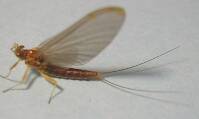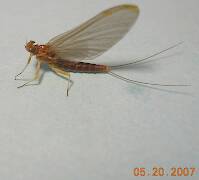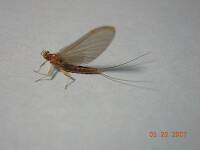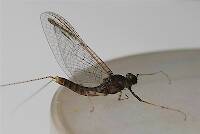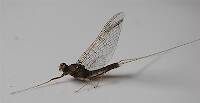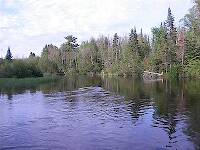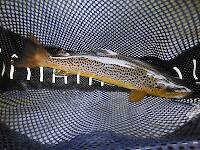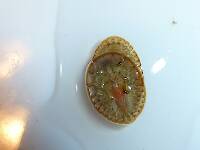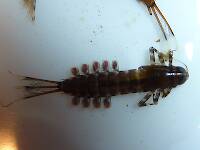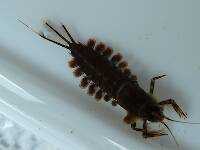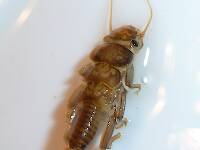
Salmonflies
Pteronarcys californica
The giant Salmonflies of the Western mountains are legendary for their proclivity to elicit consistent dry-fly action and ferocious strikes.
Featured on the forum

This one was surprisingly straightforward to identify. The lack of a sclerite at the base of the lateral hump narrows the field quite a bit, and the other options followed fairly obvious characteristics to Clostoeca, which only has one species, Clostoeca disjuncta.

Troutnut is a project started in 2003 by salmonid ecologist Jason "Troutnut" Neuswanger to help anglers and
fly tyers unabashedly embrace the entomological side of the sport. Learn more about Troutnut or
support the project for an enhanced experience here.
Nightangler on Sep 15, 2006September 15th, 2006, 6:04 am EDT
First off...
Very nice site Jason!!
next...
I would like alittle thinking of a good night time pattern for the White Miller (Nectopsyche albida )... I seen a few hatching... and the fish are hitting on white woollies buggers... I think if I got closer to the fly itself.. Id pick up alot more fish...
Any thoughts on a fly to tye??
Very nice site Jason!!
next...
I would like alittle thinking of a good night time pattern for the White Miller (Nectopsyche albida )... I seen a few hatching... and the fish are hitting on white woollies buggers... I think if I got closer to the fly itself.. Id pick up alot more fish...
Any thoughts on a fly to tye??
GONZO on Sep 16, 2006September 16th, 2006, 9:29 am EDT
Here are a few simple flies you might try--
For active (skittering) adults: Try a white Elk-Hair Caddis, (+/-) #14. If you are tying your own, you might want to add a very pale green body and a light ginger or cream hackle under the light elk- or deer-hair wing.
For spent (flush in the film) adults: Use the same pattern minus the palmered hackle (or just fish the above fly untreated and soggy).
For submerged (drowned or diving) adults: The classic White Miller wet fly works (but add a pale green body if tying your own).
For emerging pupa: You probably won't find a commercial pattern to match the pupa; so tie a soft-hackle style with a pale green (or cream) body ribbed with pearl Krystal Flash, a tan shoulder (thorax) and a collar of the palest partridge you can find.
Good Luck!
For active (skittering) adults: Try a white Elk-Hair Caddis, (+/-) #14. If you are tying your own, you might want to add a very pale green body and a light ginger or cream hackle under the light elk- or deer-hair wing.
For spent (flush in the film) adults: Use the same pattern minus the palmered hackle (or just fish the above fly untreated and soggy).
For submerged (drowned or diving) adults: The classic White Miller wet fly works (but add a pale green body if tying your own).
For emerging pupa: You probably won't find a commercial pattern to match the pupa; so tie a soft-hackle style with a pale green (or cream) body ribbed with pearl Krystal Flash, a tan shoulder (thorax) and a collar of the palest partridge you can find.
Good Luck!
Quick Reply
Related Discussions
Topic
Replies
Last Reply
9
Jun 13, 2008
by Wiflyfisher
by Wiflyfisher
6
Mar 12, 2015
by Feathers5
by Feathers5
6
Sep 11, 2020
by Martinlf
by Martinlf
5
Jun 18, 2007
by GONZO
by GONZO


